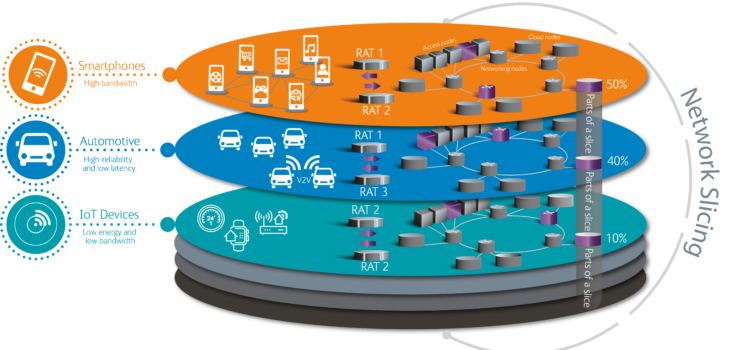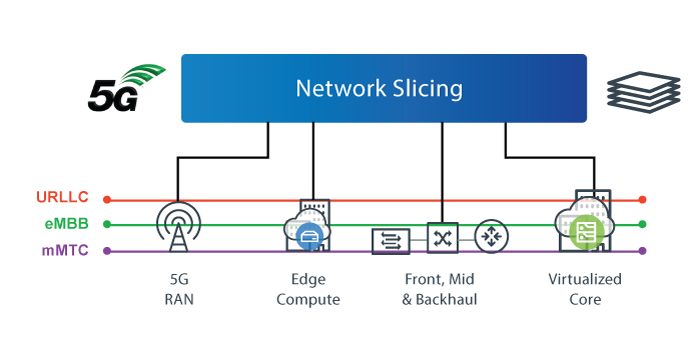As 5G supports different types of use cases from eMBB, URLLC, and MTCs. These services require strict SLA (Service Level Agreements) which requires a dedicated end-to-end channel for each service.
Exciting networks are not equipped or scalable enough to support such demands, So the solution to realize the full extend of 5G performance is Network Slicing.
Network Slicing allows the creation of an isolated end-to-end network with specific QoS (Quality of Service) which are then used to provide the required SLA.

What is network slicing in 5G?
It can be defined as a network configuration that allows multiple networks (virtualized and independent ) to be created on top of a common physical infrastructure. This configuration has become an essential component of the overall 5G architectural landscape. Each “slice” or portion of the network can be allocated based on the specific needs of the application, use case, or customer.

With network slicing, each slice can have its own architecture, management, and security to support a specific use case. While functional components and resources may be shared across network slices, capabilities such as data speed, capacity, connectivity, quality, latency, reliability, and services can be customized in each slice to conform to a specific Service Level Agreement (SLA).

